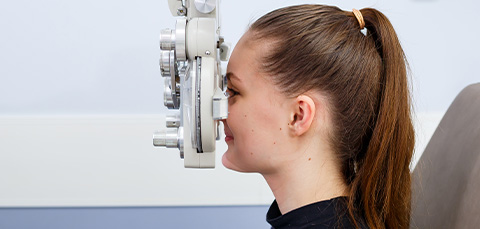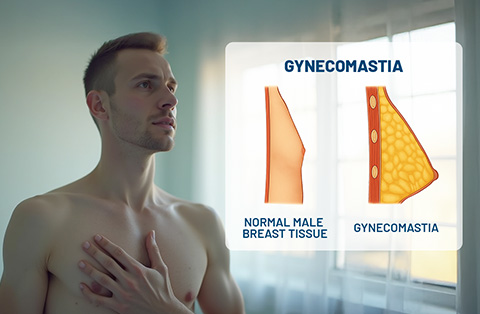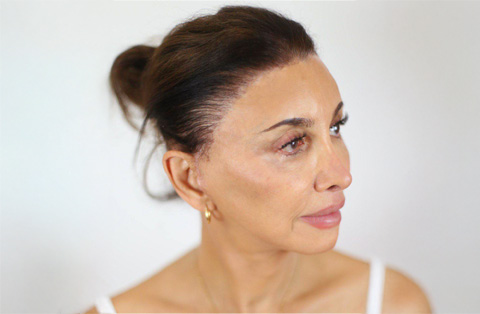Seeing halos after cataract surgery? Learn why they happen and how to reduce them. From eye drops to YAG laser treatment, discover solutions for clearer vision and improved night driving.
What is a Halo Effect?
A halo effect is a visual phenomenon where people see glowing rings or circles around lights, especially in low-light conditions. This occurs when light scatters as it enters the eye, creating a blurred or hazy outline around bright sources like streetlights, headlights, or lamps.
Halos can be more noticeable at night and may affect vision clarity. They are often associated with eye conditions, refractive errors, or changes in the eye's structure, such as those that occur after cataract surgery.
What Causes Halos After surgery?
Halos after cataract surgery occur due to changes in how light enters the eye. The most common causes include:
Intraocular Lens (IOL) Design: Multifocal or certain premium IOLs can cause light to scatter, creating halos around bright lights.
Pupil Size: Large pupils in dim light can allow more scattered light to enter, making halos more noticeable.
Residual Refractive Errors: Mild nearsightedness, farsightedness, or astigmatism after surgery can contribute to halos.
Posterior Capsule Opacification (PCO): A cloudy membrane behind the IOL, which can develop after surgery, may scatter light and create halos.
Corneal Edema: Temporary swelling of the cornea after surgery can affect light refraction, leading to halos.
Dry Eye Syndrome: Reduced tear production after surgery can cause irregularities on the eye's surface, increasing glare and halos.
Most halos improve over time as the brain adapts or as the eye heals.
How Does the lens Replacement Contribute?
The type of intraocular lens (IOL) used in cataract surgery can affect how light is processed, sometimes leading to halos. Here’s how lens replacement contributes:
Multifocal IOLs: These lenses split light into multiple focal points to improve vision at different distances. This design can cause halos, especially in low-light conditions.
Extended Depth of Focus (EDOF) IOLs: These lenses stretch the focus range, but some patients experience mild halos as the eye adjusts.
Monofocal IOLs: These provide clear vision at a single distance and have the lowest risk of halos, but they require glasses for near or distance vision.
Toric IOLs: Designed for astigmatism correction, these lenses can cause halos if they shift slightly after surgery.
Halos from IOLs often decrease over time as the brain adapts.
Role of light and glare in Halos
Light and glare play a key role in the appearance of halos after cataract surgery. When light enters the eye, it should focus clearly on the retina. However, if it scatters due to lens design, corneal irregularities, or pupil size, halos can form.
Factors affecting halos related to light and glare include:
Bright Lights at Night: Streetlights, headlights, and neon signs can produce noticeable halos in dim conditions.
Large Pupils in Low Light: More scattered light enters the eye in dark environments, making halos more pronounced.
Glare Sensitivity: Some patients experience increased glare after surgery, which can amplify halo effects.
Light Diffraction: Multifocal and EDOF IOLs split light into multiple focal points, leading to diffraction patterns that create halos.
Halos and glare often become less bothersome as the brain adapts over time.
Understanding visual phenomena Post-Surgery
After cataract surgery, the eye undergoes adjustments as it adapts to the new intraocular lens (IOL). Some visual phenomena may occur during this period, including halos, glare, starbursts, and contrast sensitivity changes.
Common post-surgery visual effects:
Halos: Rings around bright lights, often linked to multifocal or EDOF IOLs.
Glare: Increased sensitivity to bright lights, especially in sunlight or at night.
Starbursts: Radiating light patterns around headlights or streetlights, usually due to residual refractive errors or IOL design.
Contrast Sensitivity Changes: Difficulty distinguishing objects in low contrast, such as reading in dim light.
These effects are usually temporary and improve as the brain adjusts to the new visual system. In some cases, additional treatments may be needed for persistent symptoms.
Is it about secondary cataracts?
Halos after cataract surgery are not always related to secondary cataracts, but posterior capsule opacification (PCO)—often called a secondary cataract—can contribute to halos and glare.
How PCO Causes Halos:
After cataract surgery, the natural lens capsule is left intact to hold the intraocular lens (IOL).
Over time, this capsule may become cloudy due to cell growth, scattering light and creating halos.
PCO can also increase glare and blurry vision, similar to cataracts.
PCO is treatable with a quick YAG laser capsulotomy, which clears the clouded capsule and restores clear vision. If halos are due to PCO, they usually improve after this procedure.
How Long Do Halos Last After cataract surgery?
The duration of halos after cataract surgery varies from person to person. Most patients notice improvement within a few weeks to months as the brain adapts to the new intraocular lens (IOL).
Typical timeline:
First few weeks: Halos are most noticeable, especially at night.
1 to 3 months: The brain adjusts, and halos gradually fade for most patients.
Beyond 6 months: If halos persist, they may be due to residual refractive errors, pupil size, or IOL type.
For some, halos remain long-term, especially with multifocal or EDOF IOLs. If they cause significant discomfort, treatments like glasses, eye drops, or lens exchange may help.
Factors Affecting How long Halos last
Several factors influence how long halos last after cataract surgery. These include:
Type of Intraocular Lens (IOL): Multifocal and EDOF IOLs are more likely to cause long-term halos, while monofocal IOLs have a lower risk.
Brain Adaptation (Neuroadaptation): The brain learns to filter out halos over time, usually within months. Some people adapt faster than others.
Pupil Size: Larger pupils in dim lighting allow more scattered light, making halos more noticeable and prolonged.
Residual Refractive Errors: Uncorrected nearsightedness, farsightedness, or astigmatism can contribute to persistent halos.
Posterior Capsule Opacification (PCO): If the lens capsule becomes cloudy, halos may return until treated with a YAG laser capsulotomy.
Corneal Health: Swelling, dry eye, or irregularities can extend the duration of halos by affecting how light enters the eye.
Lighting Conditions: Halos are more noticeable in low-light settings, but their impact decreases as vision adapts.
Most halos improve within 3 to 6 months, but if they persist, further evaluation may be needed.
Can Halos reduce Over Time?
Yes, halos often reduce over time as the brain adapts to the new intraocular lens (IOL) and the eye heals. This process, known as neuroadaptation, allows the brain to filter out unwanted visual disturbances.
Factors that help halos fade:
Brain Adjustment: Most patients experience reduced halos within 3 to 6 months.
Healing Process: Corneal swelling and dry eye improve, reducing light scattering.
Lighting Adaptation: The eye gradually becomes less sensitive to glare and bright lights.
Corrective Measures: Glasses, eye drops, or minor adjustments in vision correction can help.
If halos persist beyond six months and affect daily life, further evaluation may be needed for treatment options.
What Are the treatment options for Halos?
If halos persist after cataract surgery and affect vision quality, several treatment options can help:
Non-Surgical Options
Time and Adaptation: Most halos fade as the brain adjusts over 3 to 6 months.
Anti-Glare Glasses: Special lenses reduce glare and improve night vision.
Lubricating Eye Drops: Treat dry eyes, which can contribute to halos.
Pupil-Constricting Drops: Reduce pupil size to limit scattered light entry.
Medical and Surgical Treatments
YAG Laser Capsulotomy: Clears cloudiness from posterior capsule opacification (PCO), a common cause of halos.
Laser Vision Correction (LASIK or PRK): Addresses residual refractive errors like astigmatism.
IOL Exchange: If halos are severe and persistent, replacing the intraocular lens with a different type may help.
Treatment choice depends on the cause and severity of the halos. A doctor can recommend the best approach based on individual needs.
Use of eye drops and Other Medications
Eye drops and medications can help manage halos after cataract surgery, especially if they are caused by dry eyes, pupil size, or residual refractive errors.
Types of Eye Drops and Medications
Lubricating Eye Drops: Reduce dryness and improve tear film stability, which helps minimize halos.
Pupil-Constricting Drops (Pilocarpine): Decrease pupil size, limiting light scatter and reducing halos in dim lighting.
Anti-Inflammatory Drops: Help with corneal swelling and inflammation that may contribute to halos.
Hyperosmotic Drops: Reduce corneal edema (swelling), improving clarity and decreasing glare.
These treatments can provide relief, but if halos persist, further evaluation may be needed to explore other options.
When to Consider yag laser Treatments?
YAG laser treatment should be considered if halos persist after cataract surgery due to posterior capsule opacification (PCO). PCO occurs when the lens capsule becomes cloudy, scattering light and causing visual disturbances.
Signs You May Need YAG Laser Capsulotomy:
Persistent halos, glare, or blurry vision months after surgery.
Difficulty seeing clearly in bright or low-light conditions.
Vision worsening despite previous improvement after surgery.
When to Seek Treatment:
If halos significantly affect daily activities like night driving.
If other treatments, such as eye drops or glasses, do not help.
YAG laser capsulotomy is a quick, painless procedure that restores clear vision by removing the cloudy layer. Most patients notice immediate improvement, with halos and glare decreasing soon after treatment.
How Does eye care Impact Recovery?
Proper eye care after cataract surgery plays a key role in reducing halos and promoting smooth recovery. Good eye health helps minimize complications and supports visual adaptation.
Ways Eye Care Affects Recovery:
Prevents Dry Eye: Using lubricating eye drops maintains a stable tear film, reducing glare and halos.
Reduces Inflammation: Anti-inflammatory drops help control swelling, which can affect light refraction.
Protects the Eye: Wearing sunglasses shields against bright light and UV exposure, reducing glare sensitivity.
Supports Healing: Following post-surgery care, such as avoiding eye rubbing and using prescribed medications, ensures a smoother recovery.
Improves Adaptation: Proper hydration, rest, and a healthy diet support overall eye function, helping the brain adjust to new visual patterns.
Consistent eye care enhances recovery and minimizes long-term visual disturbances like halos.
Importance of Regular Visits to the eye doctor
Regular eye doctor visits are essential after cataract surgery to monitor healing and address any visual disturbances, including halos.
Why Follow-Up Appointments Matter:
Detects Complications Early: Identifies issues like posterior capsule opacification (PCO), residual refractive errors, or dry eye.
Evaluates Healing Progress: Ensures the intraocular lens (IOL) is stable and the eye is adapting properly.
Adjusts Treatment Plans: Helps determine if additional treatments, such as YAG laser or vision correction, are needed.
Manages Persistent Halos: Assesses if halos are improving or require intervention, such as eye drops or lens exchange.
Routine check-ups help maintain clear vision and prevent long-term complications. If halos persist beyond a few months, an eye doctor can recommend the best solution.





